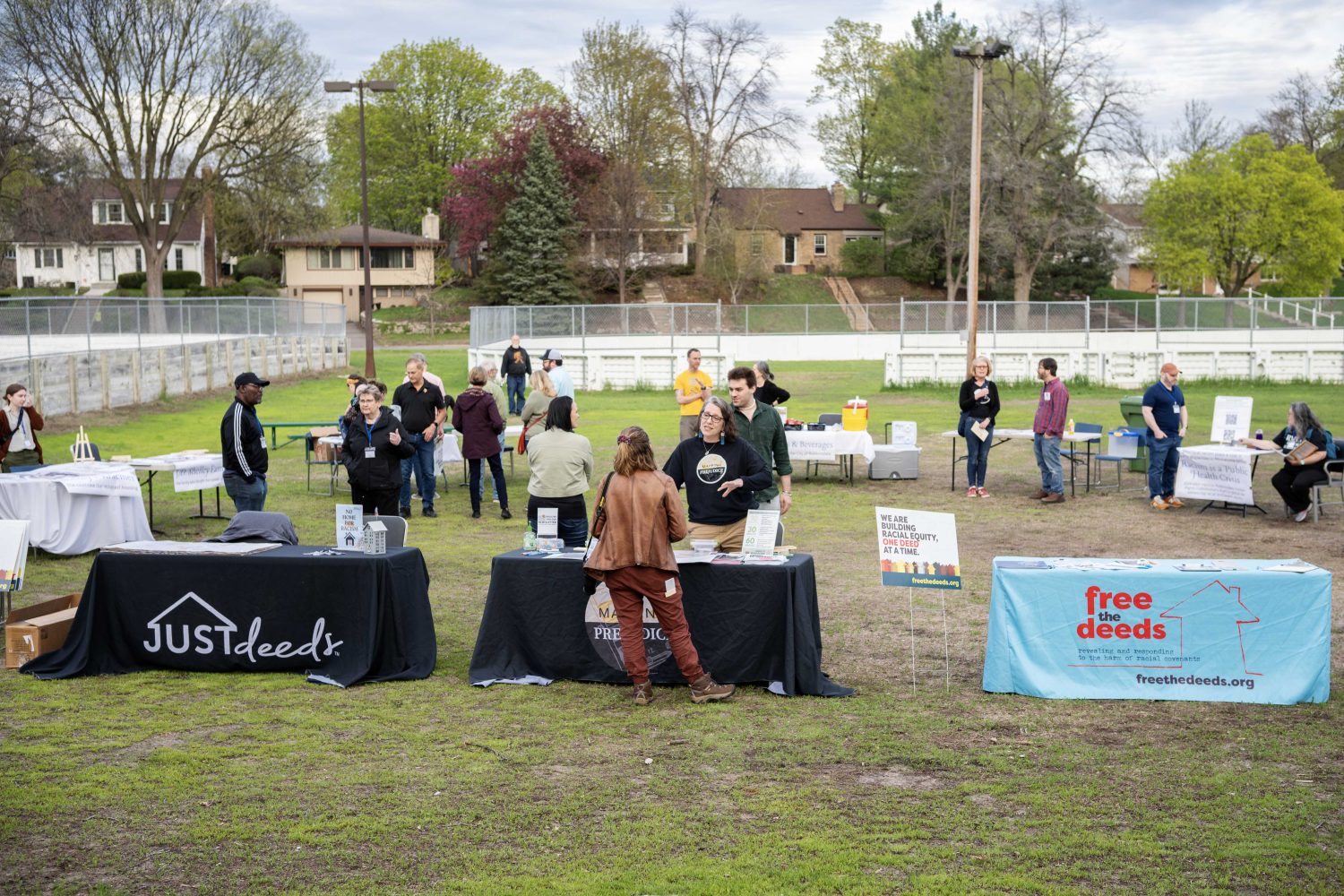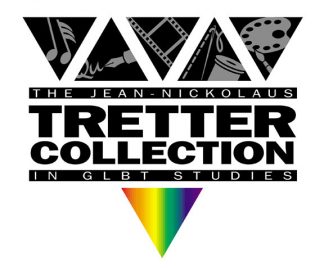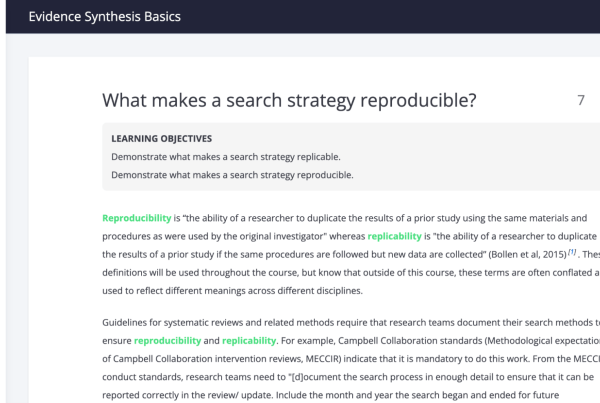Before Robbinsdale was Robbinsdale, the Sanborn family owned much of the unplatted lands in the area. And as the town’s population grew, and the property around Crystal Lake was developed and sold, the Sanborn Holding Company knew who they wanted to live there.
“The premises hereby conveyed shall not at any time be conveyed, mortgaged or leased to any person or persons of Chinese, Japanese, Moorish, Turkish, Negro, Mongolian or African blood or descent.”
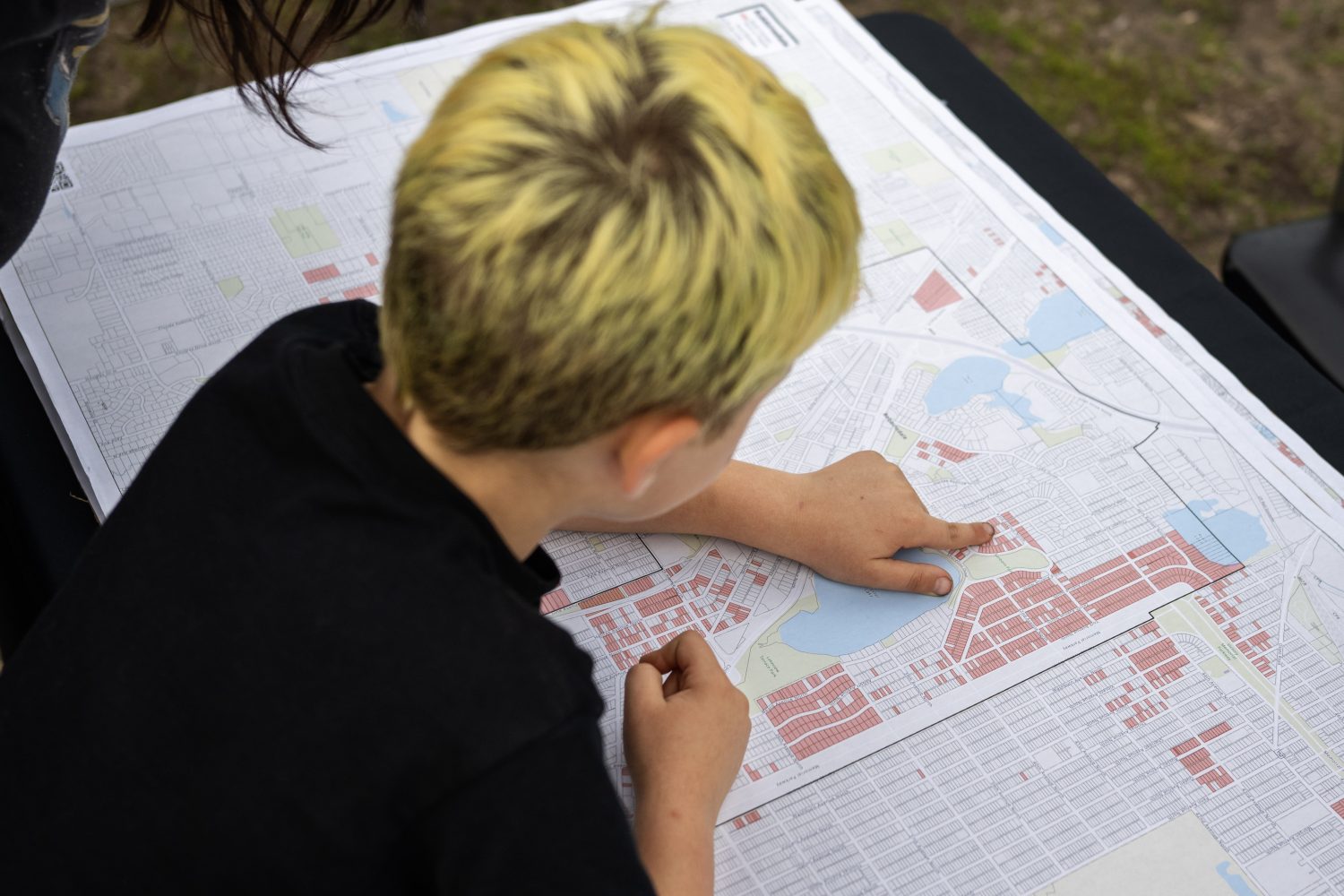
A young boy looks points to his street on a map of racial covenants in Robbinsdale, Minnesota, on Friday, May 3, 2024. (Photo/Adria Carpenter)
Racial covenants like these peppered property deeds throughout Robbinsdale, as well as the neighboring suburbs like Golden Valley. Today Sanborn Park, overlooking the northern coast of Crystal Lake, bears the Sanborn name.
But not for long. Thanks in part to the work of Mapping Prejudice and Just Deeds, the city of Robbinsdale is renaming the park. On May 3, the city took suggestions for the park’s new name and celebrated Shelley Day, the anniversary of the U.S. Supreme Court decision that the state cannot enforce racial covenants.
At the event, local residents learned about the history of racial covenants in their neighborhood with the Robbinsdale Historical Society, Just Deeds, and Mapping Prejudice.
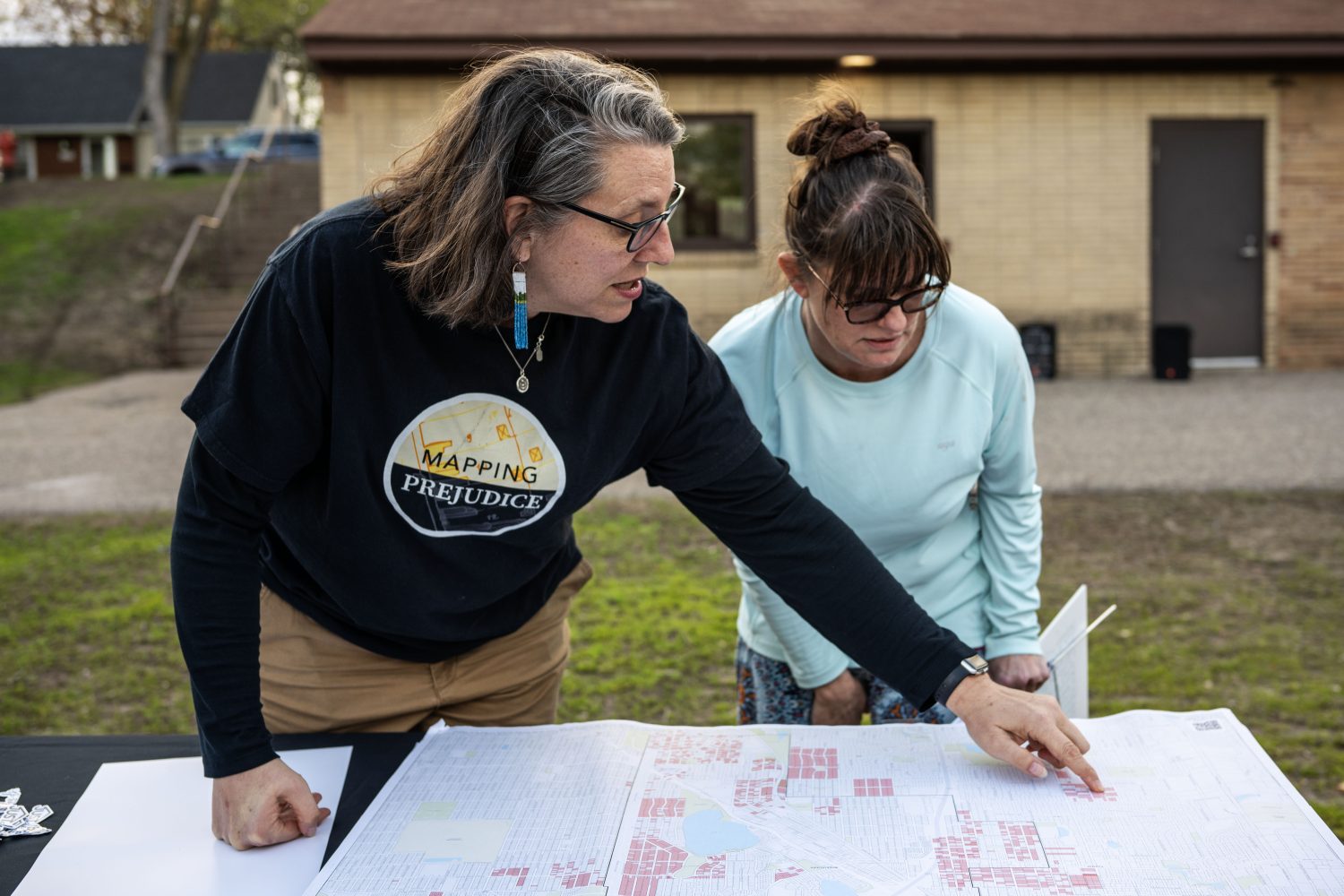
Julliette Dannucci learns about the racial covenant on her home with Rebecca Gillette, the Mapping Prejudice community engagement lead, at Sanborn Park in Robbinsdale, Minnesota, on Friday, May 3, 2024. (Photo/Adria Carpenter)
One of those residents was Julliette Dannucci. She saw a poster for the event and wanted to see what she could do to help. And while looking at the map of racial covenants in Robbinsdale, she saw that her own home had a racial covenant on it.
“It’s disturbing,” Dannucci said. “Because I had no idea, no idea! But I’m glad it’s gonna get taken care of.”
Dannucci is getting the racial covenant discharged by working with Just Deeds, an organization that provides free legal services to find and discharge discriminatory covenants from property titles. She also plans to volunteer with Mapping Prejudice.
“I want to find a way to get my neighborhood to figure that out too, because obviously I think a lot of us don’t know that,” she said. “Hopefully we can get the word out, and more people can do this as well and get this changed.”
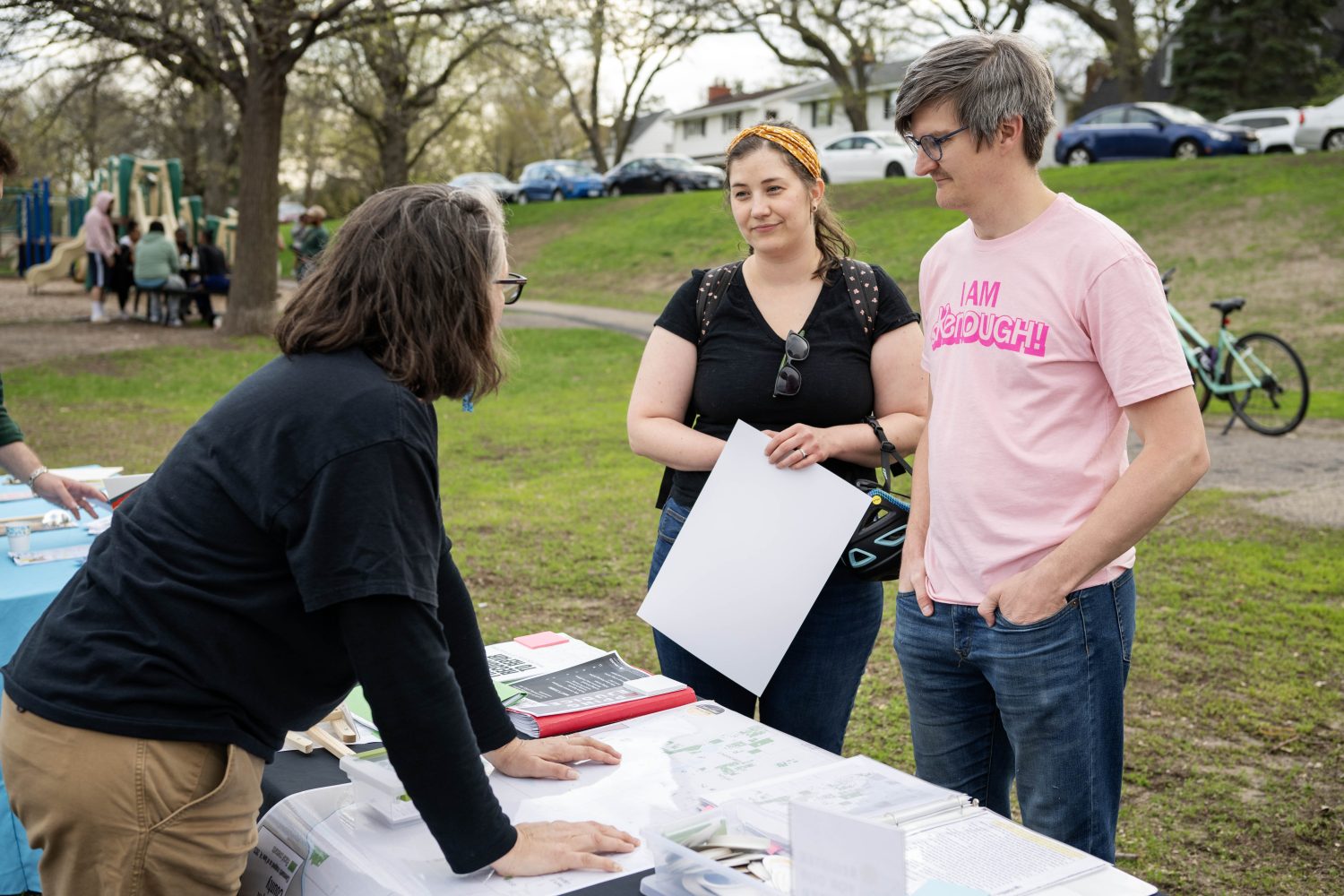
Jon and Becca Wonder learn about the racial covenant on her home with Rebecca Gillette, the Mapping Prejudice community engagement lead, at Sanborn Park in Robbinsdale, Minnesota, on Friday, May 3, 2024. (Photo/Adria Carpenter)
Jon and Becca Wonder also learned that their home had a racial covenant, though they weren’t surprised.
“We knew our house was built in the suburbs back in the 1920s through 50s, Jim Crow era,” Jon said. “It sucks. It’s stupid.”
Jon lived in Robbinsdale at an early age and moved back last year. Even though these covenants aren’t enforceable, following the 1948 Shelley decision, they still wanted to discharge it, “to put it on the record.”
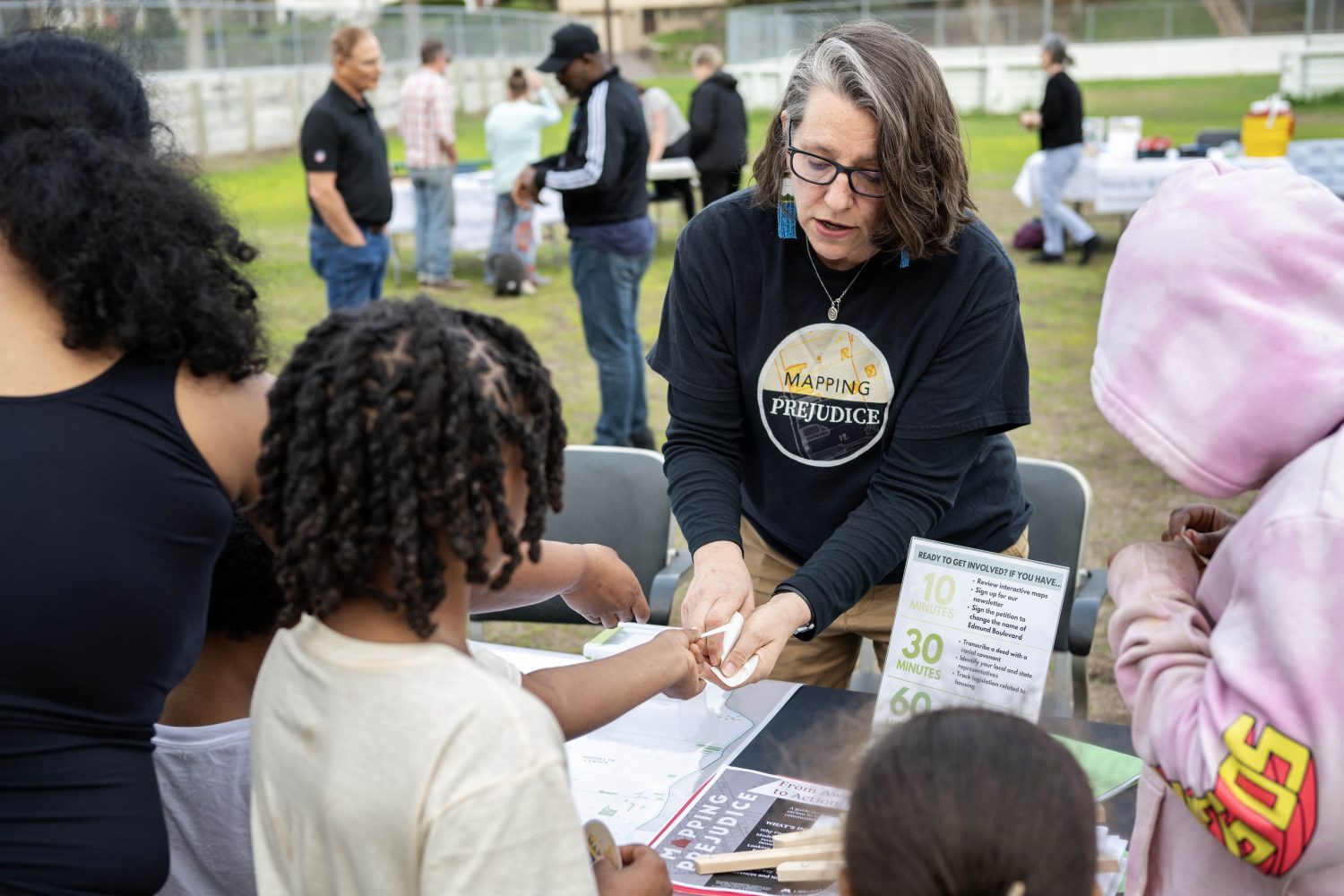
Rebecca Gillette, the Mapping Prejudice community engagement lead, passes out stickers to neighborhood kids in Robbinsdale, Minnesota, on Friday, May 3, 2024. (Photo/Adria Carpenter)
The case arose when in 1945 the Shelleys, an African-American family, moved into a neighborhood in St. Louis, Missouri, which for decades had enacted racial covenants to prevent African and Asian Americans from living in the area. Louis Kraemer sued and petitioned the courts to enforce the covenant and prevent the Shelleys from moving into the neighborhood.
The Supreme Court unanimously ruled that racial covenants between private parties do not, by themselves, violate the Equal Protection Clause of the Fourteenth Amendment. Individuals may enact and follow racial covenants, but they cannot use the courts to enforce them. State and judicial enforcement of racial covenants does violate the Fourteenth Amendment, it decided.
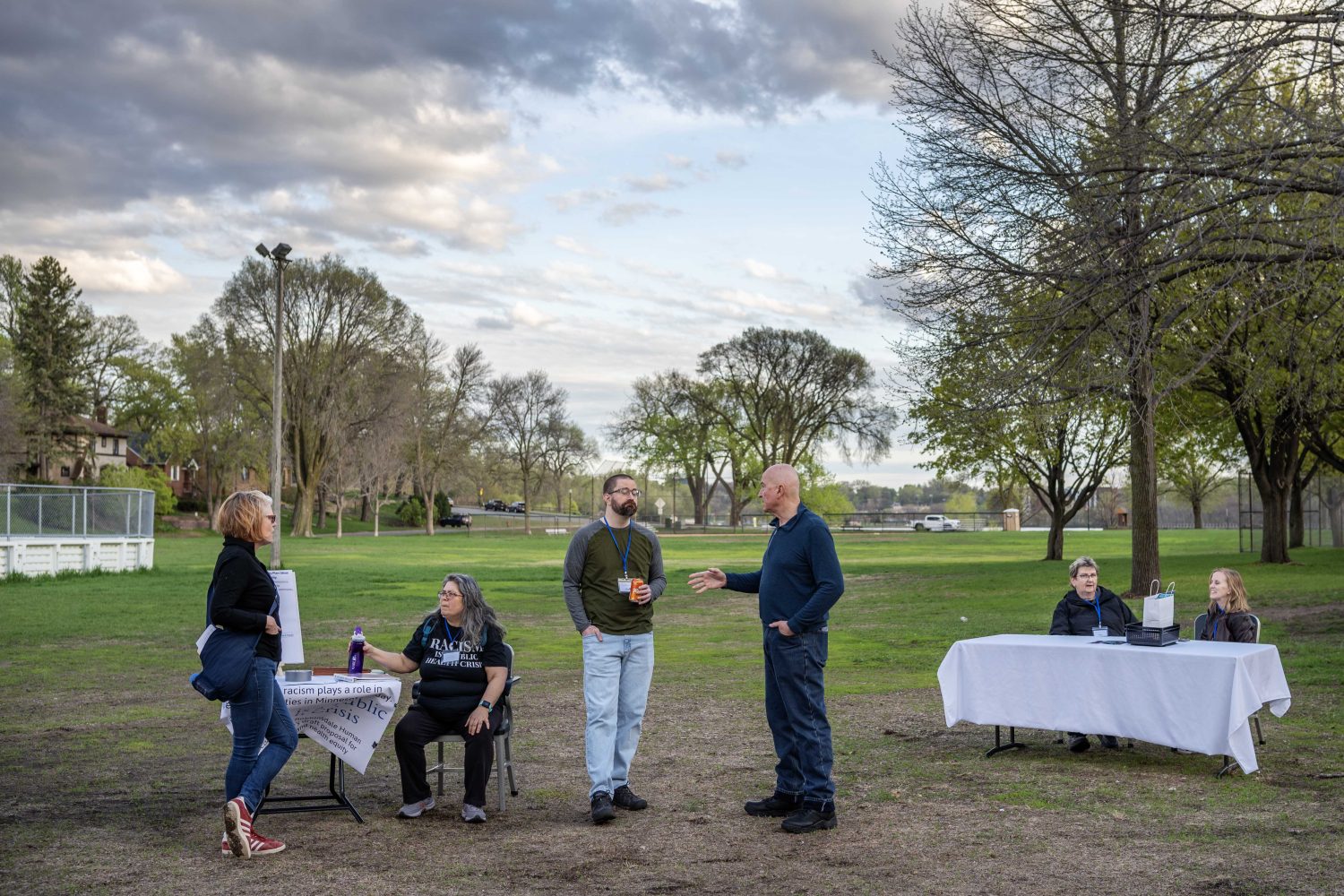
Attendees celebrate Shelley Day, learn about the history of Sanborn Park and of racial covenants in Robbinsdale, on Friday, May 3, 2024. (Photo/Adria Carpenter)
In 1953, the Minnesota State Legislature banned placing new racial covenants on property titles, and in 1962, the state banned housing discrimination on the basis of race, religion, and national origin.The federal government caught up six years later with the passage of the Fair Housing Act, which made racial covenants illegal and unenforceable nationwide.
Although racial covenants are now, in effect, toothless, their impact continues into the present day. They created segregated neighborhoods and denied families the ability to acquire generational wealth through homeownership, as well as disparities in access to affordable housing and homeownership that still persist today.
Maria Cisneros, the city attorney for Golden Valley and co-founder of Just Deeds, researched the history of the Sanborn family and the racial covenants in Robbinsdale, and spoke with her father, Bill Blonigan, the mayor of Robbinsdale, about renaming Sanborn Park.
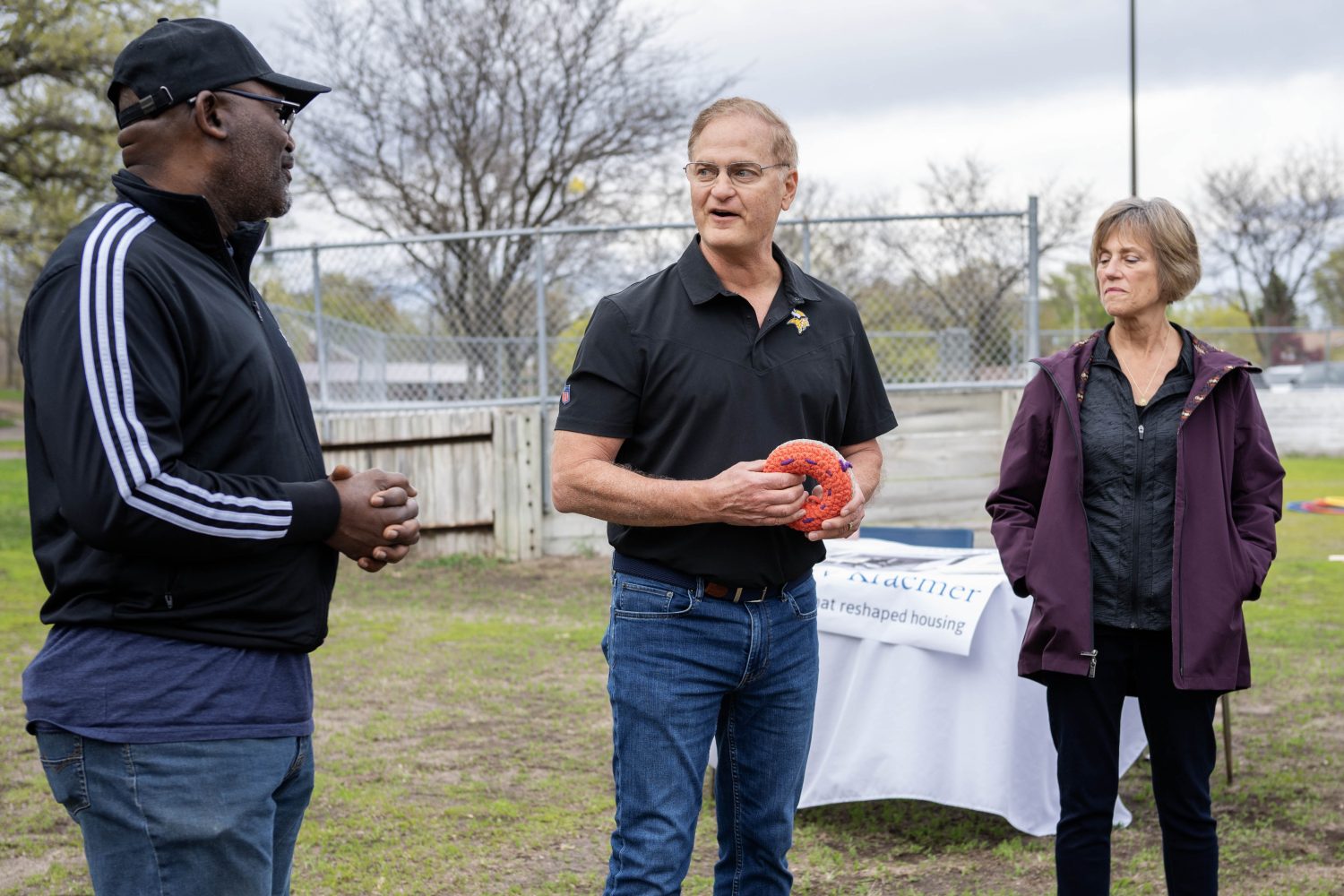
Bill Blonigan, the mayor of Robbinsdale, talks about the legacy of the Sanborn family and racial covenants in Robbinsdale on Friday, May 3, 2024. (Photo/Adria Carpenter)
Blonigan wasn’t surprised about Robbinsdale’s racial covenants – he remembers learning about Shelley v. Kraemer in law school in the 1970s, and later seeing these covenants appear in real estate law – but he was surprised to see Mapping Prejudice’s maps showing a fence of racial covenants dividing Minneapolis and Robbinsdale, as well as Minneapolis and Golden Valley.
“We were a leader, in the bad sense of the word, in having racially restrictive covenants along the border,” Blonigan said. “It’s just terrible.”
“Mapping Prejudice is brilliant in how they’re done these videos, in showing how it filled in over the years, with all the properties individually,” he continued. “You can just see how it was all designed to keep people separated.”


